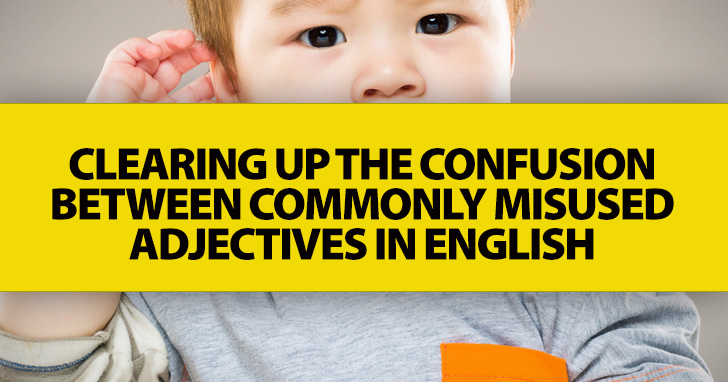A Guess Isnít Good Enough: How to Help Your Students with Easily Confused Words


Help your students get their ideas and their words straight by pointing out the difference in these easily confused adjective pairs.

Both of these adjectives are used to describe the quantity of a noun, but they are not used with the same nouns. Many is used with plural nouns. You might ask how many assignments students have or how many movies they watched over the weekend. Much is not used with plural nouns. In fact, it is limited to use with noncount (mass) nouns. If your students have studied noncount nouns, they know these are nouns which cannot be counted or quantified without the use of an additional word (known as a quantifier). When your students want to ask about the amount of a noncount noun, they should use much. How much homework to you have? How much money does it cost.
Is few is a plural form of a few? No. In fact, the phrases actually have opposing meanings. A few is used with countable nouns to express a small number, but a number that is positive. I have a few ideas. She went with a few friends. Few on its own, however, expresses a negative or lack in number. She has few friends means she doesn’t have very many. She should have more. I have few feelings about the test. I don’t really have feelings either way, or if I do they aren’t worth mentioning.
Where a few is used to express a small number of count nouns, a little is used to express a small amount of noncount nouns. There is a little milk left in the container. I have a little homework left to do before tomorrow. Little, on the other hand, describes the size of a given noun. A puppy is little. Your car is little. It does not express quantity of any sort.
While each and every may frequently be used together in casual English, the two words actually have quite different meanings. When a speaker uses each, he is referring to individual items. Each teacher will give a separate grade. Each meal will be put on its own bill. Every, on the other hand, refers to all the items of a given set. She goes to the movies every Friday means that whenever Friday comes along, she will be going to the movies. It happens whenever Friday comes to pass, that is every time the day rolls around.
In some circumstances, the three words can all be used to describe the same situation, but your ESL students should know the difference between the three words and when it is appropriate to use each of them. English speakers use the word injured to describe a victim of a negative circumstance. The injured person may have suffered physical harm at the hand of another, financial trauma, or emotional damage. Injured implies that another person caused the negative effect to the injured person. Wounded, however, does not imply the involvement of another person. It does imply a physical injury. A person can be wounded in an accident or by another person. Hurt is perhaps the most general adjective of the three. Hurt describes an experience of pain. That pain can be physical or emotional. She might hurt because she broke her foot or because her boyfriend broke up with her.
One little letter can make a big difference between two words, and farther and further are perfect examples of that. Farther is an adjective always used to express distance. She ran farther than he did. How much farther do we have to go to get to his house? Further does not express distance but expresses the idea of subsequent or continuing circumstances or items, the idea of furthermore. We will discuss the problem further in class tomorrow. We will need to discuss this item further.
Once again the difference between countable and noncount nouns makes a difference in which adjective a person should use. Less is used with noncount nouns to indicate a smaller amount. She has less homework than he does. She has less furniture in her apartment than I do. Fewer is used with countable nouns to indicate a lower number. She has fewer chairs than I do. He has fewer assignments than she does.
Last and latter are similar in meaning, but not in function. Last is the opposite of first and means a final item. This is the last class in the program. Latter is the opposite of former, and it means that of a list just presented, we are referring to the last one. Between cake and ice cream, I prefer the latter. Latest does not have to do with sequence (like last or latter) but with time. The opposite of latest is oldest or most ancient. Use latest to refer to the most recent in time. Her latest boyfriend was my favorite.
While both adjectives refer to vertical position, they are used in reference to different things. Tall is in reference to an item’s height or vertical size. High is used to refer to the distance something is from the ground. If a person is ten feet tall, their body takes up ten feet in vertical space. If a person is ten feet high, it means there are ten feet in distance between them and the ground.
Though often used interchangeably, ill is actually a broader term than sick. Sick refers to a physical ailment due either to disease or circumstance. She was sick from the bumpy ride. He is sick with a cold. Ill can mean sick, but it can also mean bad, poor, or unwell. He is ill with a cold. He was ill advised to take the bumpy trip.
Please share them in the comments section below.